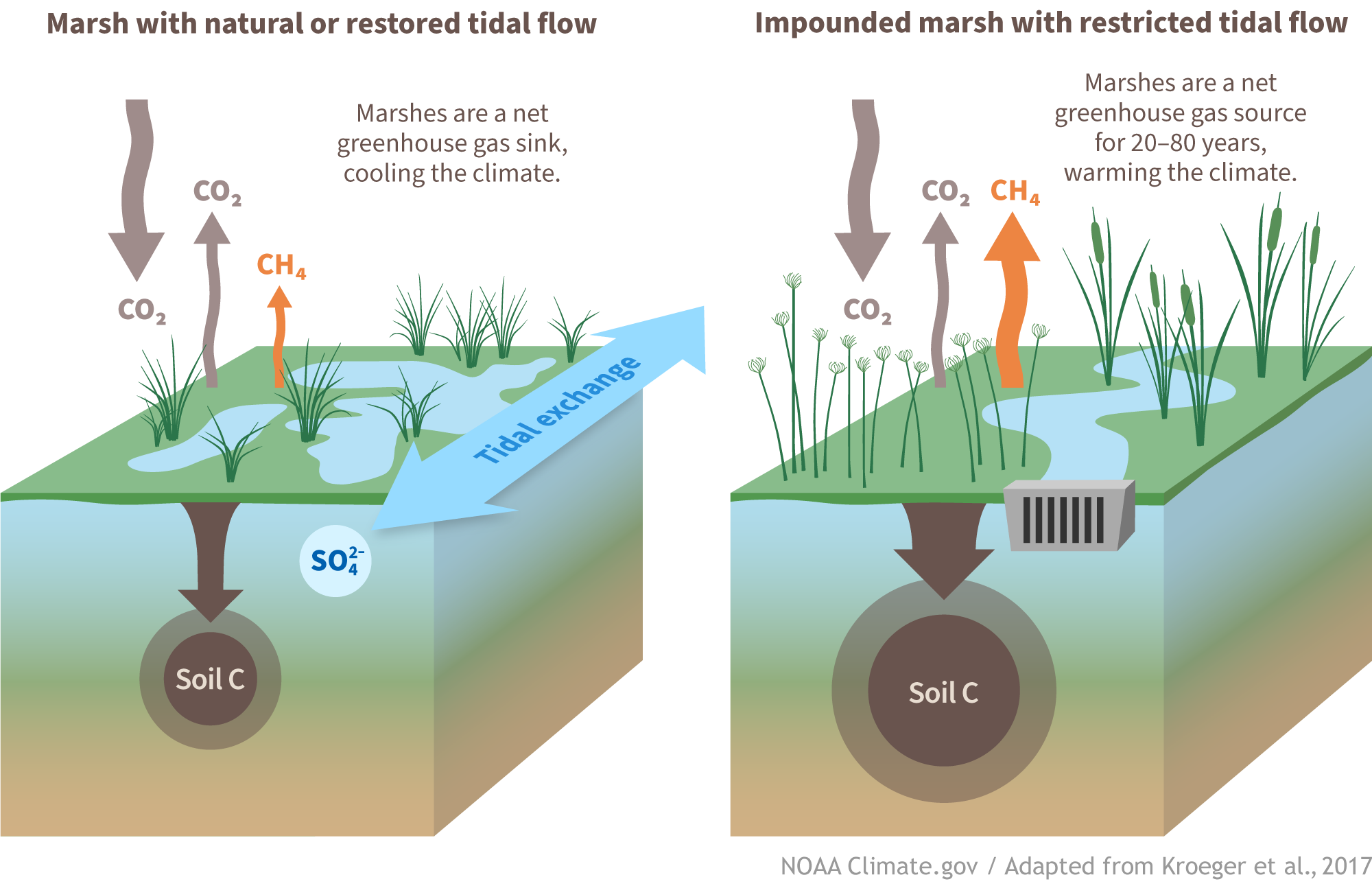
A marsh with natural or restored tidal flow is immediately a greenhouse gas sink and is best for climate mitigation. An impounded marsh is initially a greenhouse gas source. (left) In tidally restored marshes, sulfate ion—a molecule commonly found in seawater—prevents methane production and emissions to the atmosphere. Meanwhile, marsh plants take up carbon dioxide through photosynthesis at high rates and bury carbon in their soil. (right) In restored but impounded marshes with restricted tidal flow, soil carbon storage rates are very high since the tides are not washing away and depleting soil carbon as they ebb and flow. Without sulfate ion from seawater, however, these marshes emit large amounts of methane, making them a net greenhouse gas source. It can take up to 80 years for an impounded marsh to become a greenhouse gas sink. Climate.gov graphic adapted from Kroeger, K.D., Crooks, S., Moseman-Valtierra, S. et al. Restoring tides to reduce methane emissions in impounded wetlands: A new and potent Blue Carbon climate change intervention. Sci Rep 7, 11914 (2017). https://doi.org/10.1038/s41598-017-12138-4.